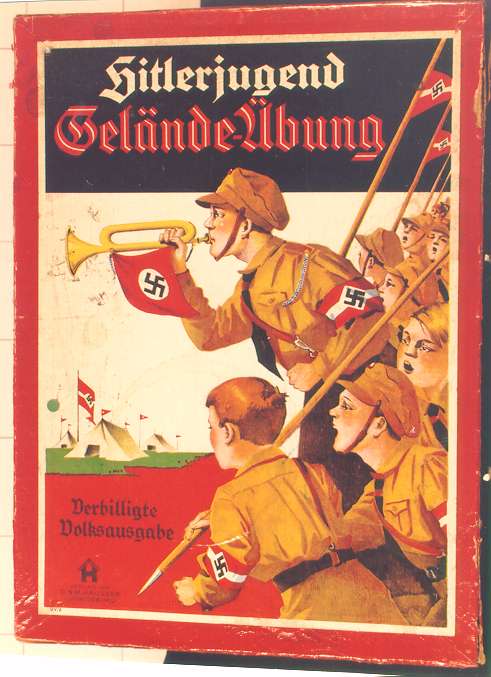
The History of the Decline and Fall
of the Roman Empire
Chapter XXIII
Reign of Julian
Part IV
The restoration of the Jewish temple was secretly connected with the ruin of the Christian church. Julian still continued to maintain the freedom of religious worship, without distinguishing whether this universal toleration proceeded from his justice or his clemency. He affected to pity the unhappy Christians, who were mistaken in the most important object of their lives; but his pity was degraded by contempt, his contempt was embittered by hatred; and the sentiments of Julian were expressed in a style of sarcastic wit, which inflicts a deep and deadly wound, whenever it issues from the mouth of a sovereign.
As he was sensible that the Christians gloried in the name of their Redeemer, he countenanced, and perhaps enjoined, the use of the less honorable appellation of Galilæans. He declared, that by the folly of the Galilæans, whom he describes as a sect of fanatics, contemptible to men, and odious to the gods, the empire had been reduced to the brink of destruction; and he insinuates in a public edict, that a frantic patient might sometimes be cured by salutary violence. An ungenerous distinction was admitted into the mind and counsels of Julian, that, according to the difference of their religious sentiments, one part of his subjects deserved his favor and friendship, while the other was entitled only to the common benefits that his justice could not refuse to an obedient people.
According to a principle, pregnant with mischief and oppression, the emperor transferred to the pontiffs of his own religion the management of the liberal allowances for the public revenue, which had been granted to the church by the piety of Constantine and his sons. The proud system of clerical honors and immunities, which had been constructed with so much art and labor, was leveled to the ground; the hopes of testamentary donations were intercepted by the rigor of the laws; and the priests of the Christian sect were confounded with the last and most ignominious class of the people. Such of these regulations as appeared necessary to check the ambition and avarice of the ecclesiastics, were soon afterwards imitated by the wisdom of an orthodox prince.
The peculiar distinctions which policy has bestowed, or superstition has lavished, on the sacerdotal order, must be confined to those priests who profess the religion of the state. But the will of the legislator was not exempt from prejudice and passion; and it was the object of the insidious policy of Julian, to deprive the Christians of all the temporal honors and advantages which rendered them respectable in the eyes of the world. A just and severe censure has been inflicted on the law which prohibited the Christians from teaching the arts of grammar and rhetoric.
The motives alleged by the emperor to justify this partial and oppressive measure, might command, during his lifetime, the silence of slaves and the applause of flatterers. Julian abuses the ambiguous meaning of a word which might be indifferently applied to the language and the religion of the Greeks: he contemptuously observes, that the men who exalt the merit of implicit faith are unfit to claim or to enjoy the advantages of science; and he vainly contends, that if they refuse to adore the gods of Homer and Demosthenes, they ought to content themselves with expounding Luke and Matthew in the church of The Galilæans.
In all the cities of the Roman world, the education of the youth was intrusted to masters of grammar and rhetoric; who were elected by the magistrates, maintained at the public expense, and distinguished by many lucrative and honorable privileges. The edict of Julian appears to have included the physicians, and professors of all the liberal arts; and the emperor, who reserved to himself the approbation of the candidates, was authorized by the laws to corrupt, or to punish, the religious constancy of the most learned of the Christians.
As soon as the resignation of the more obstinate teachers had established the unrivalled dominion of the Pagan sophists, Julian invited the rising generation to resort with freedom to the public schools, in a just confidence, that their tender minds would receive the impressions of literature and idolatry. If the greatest part of the Christian youth should be deterred by their own scruples, or by those of their parents, from accepting this dangerous mode of instruction, they must, at the same time, relinquish the benefits of a liberal education. Julian had reason to expect that, in the space of a few years, the church would relapse into its primæval simplicity, and that the theologians, who possessed an adequate share of the learning and eloquence of the age, would be succeeded by a generation of blind and ignorant fanatics, incapable of defending the truth of their own principles, or of exposing the various follies of Polytheism.
It was undoubtedly the wish and design of Julian to deprive the Christians of the advantages of wealth, of knowledge, and of power; but the injustice of excluding them from all offices of trust and profit seems to have been the result of his general policy, rather than the immediate consequence of any positive law. Superior merit might deserve and obtain, some extraordinary exceptions; but the greater part of the Christian officers were gradually removed from their employments in the state, the army, and the provinces. The hopes of future candidates were extinguished by the declared partiality of a prince, who maliciously reminded them, that it was unlawful for a Christian to use the sword, either of justice, or of war; and who studiously guarded the camp and the tribunals with the ensigns of idolatry.
The powers of government were intrusted to the pagans, who professed an ardent zeal for the religion of their ancestors; and as the choice of the emperor was often directed by the rules of divination, the favorites whom he preferred as the most agreeable to the gods, did not always obtain the approbation of mankind. Under the administration of their enemies, the Christians had much to suffer, and more to apprehend. The temper of Julian was averse to cruelty; and the care of his reputation, which was exposed to the eyes of the universe, restrained the philosophic monarch from violating the laws of justice and toleration, which he himself had so recently established.
But the provincial ministers of his authority were placed in a less conspicuous station. In the exercise of arbitrary power, they consulted the wishes, rather than the commands, of their sovereign; and ventured to exercise a secret and vexatious tyranny against the sectaries, on whom they were not permitted to confer the honors of martyrdom. The emperor, who dissembled as long as possible his knowledge of the injustice that was exercised in his name, expressed his real sense of the conduct of his officers, by gentle reproofs and substantial rewards.
The most effectual instrument of oppression, with which they were armed, was the law that obliged the Christians to make full and ample satisfaction for the temples which they had destroyed under the preceding reign. The zeal of the triumphant church had not always expected the sanction of the public authority; and the bishops, who were secure of impunity, had often marched at the head of their congregation, to attack and demolish the fortresses of the prince of darkness. The consecrated lands, which had increased the patrimony of the sovereign or of the clergy, were clearly defined, and easily restored. But on these lands, and on the ruins of Pagan superstition, the Christians had frequently erected their own religious edifices: and as it was necessary to remove the church before the temple could be rebuilt, the justice and piety of the emperor were applauded by one party, while the other deplored and execrated his sacrilegious violence.
After the ground was cleared, the restitution of those stately structures which had been levelled with the dust, and of the precious ornaments which had been converted to Christian uses, swelled into a very large account of damages and debt. The authors of the injury had neither the ability nor the inclination to discharge this accumulated demand: and the impartial wisdom of a legislator would have been displayed in balancing the adverse claims and complaints, by an equitable and temperate arbitration. But the whole empire, and particularly the East, was thrown into confusion by the rash edicts of Julian; and the Pagan magistrates, inflamed by zeal and revenge, abused the rigorous privilege of the Roman law, which substitutes, in the place of his inadequate property, the person of the insolvent debtor.
Under the preceding reign, Mark, bishop of Arethusa, had labored in the conversion of his people with arms more effectual than those of persuasion. The magistrates required the full value of a temple which had been destroyed by his intolerant zeal: but as they were satisfied of his poverty, they desired only to bend his inflexible spirit to the promise of the slightest compensation. They apprehended the aged prelate, they inhumanly scourged him, and they tore his beard; and his naked body, anointed with honey, was suspended, in a net, between heaven and earth, and exposed to the stings of insects and the rays of a Syrian sun.
From this lofty station, Mark still persisted to glory in his crime, and to insult the impotent rage of his persecutors. He was at length rescued from their hands, and dismissed to enjoy the honor of his divine triumph. The Arians celebrated the virtue of their pious confessor; the Catholics ambitiously claimed his alliance; and the Pagans, who might be susceptible of shame or remorse, were deterred from the repetition of such unavailing cruelty. Julian spared his life: but if the bishop of Arethusa had saved the infancy of Julian, posterity will condemn the ingratitude, instead of praising the clemency, of the emperor. At the distance of five miles from Antioch, the Macedonian kings of Syria had consecrated to Apollo one of the most elegant places of devotion in the Pagan world.
A magnificent temple rose in honor of the god of light; and his colossal figure almost filled the capacious sanctuary, which was enriched with gold and gems, and adorned by the skill of the Grecian artists. The deity was represented in a bending attitude, with a golden cup in his hand, pouring out a libation on the earth; as if he supplicated the venerable mother to give to his arms the cold and beauteous Daphne: for the spot was ennobled by fiction; and the fancy of the Syrian poets had transported the amorous tale from the banks of the Peneus to those of the Orontes. The ancient rites of Greece were imitated by the royal colony of Antioch.
A stream of prophecy, which rivalled the truth and reputation of the Delphic oracle, flowed from the Castalian fountain of Daphne. In the adjacent fields a stadium was built by a special privilege, which had been purchased from Elis; the Olympic games were celebrated at the expense of the city; and a revenue of thirty thousand pounds sterling was annually applied to the public pleasures. The perpetual resort of pilgrims and spectators insensibly formed, in the neighborhood of the temple, the stately and populous village of Daphne, which emulated the splendor, without acquiring the title, of a provincial city. The temple and the village were deeply bosomed in a thick grove of laurels and cypresses, which reached as far as a circumference of ten miles, and formed in the most sultry summers a cool and impenetrable shade.
A thousand streams of the purest water, issuing from every hill, preserved the verdure of the earth, and the temperature of the air; the senses were gratified with harmonious sounds and aromatic odors; and the peaceful grove was consecrated to health and joy, to luxury and love. The vigorous youth pursued, like Apollo, the object of his desires; and the blushing maid was warned, by the fate of Daphne, to shun the folly of unseasonable coyness. The soldier and the philosopher wisely avoided the temptation of this sensual paradise: where pleasure, assuming the character of religion, imperceptibly dissolved the firmness of manly virtue.
But the groves of Daphne continued for many ages to enjoy the veneration of natives and strangers; the privileges of the holy ground were enlarged by the munificence of succeeding emperors; and every generation added new ornaments to the splendor of the temple. When Julian, on the day of the annual festival, hastened to adore the Apollo of Daphne, his devotion was raised to the highest pitch of eagerness and impatience.
His lively imagination anticipated the grateful pomp of victims, of libations and of incense; a long procession of youths and virgins, clothed in white robes, the symbol of their innocence; and the tumultuous concourse of an innumerable people. But the zeal of Antioch was diverted, since the reign of Christianity, into a different channel. Instead of hecatombs of fat oxen sacrificed by the tribes of a wealthy city to their tutelar deity the emperor complains that he found only a single goose, provided at the expense of a priest, the pale and solitary in habitant of this decayed temple. The altar was deserted, the oracle had been reduced to silence, and the holy ground was profaned by the introduction of Christian and funereal rites.
After Babylas (a bishop of Antioch, who died in prison in the persecution of Decius) had rested near a century in his grave, his body, by the order of Cæsar Gallus, was transported into the midst of the grove of Daphne. A magnificent church was erected over his remains; a portion of the sacred lands was usurped for the maintenance of the clergy, and for the burial of the Christians at Antioch, who were ambitious of lying at the feet of their bishop; and the priests of Apollo retired, with their affrighted and indignant votaries. As soon as another revolution seemed to restore the fortune of Paganism, the church of St. Babylas was demolished, and new buildings were added to the mouldering edifice which had been raised by the piety of Syrian kings.
But the first and most serious care of Julian was to deliver his oppressed deity from the odious presence of the dead and living Christians, who had so effectually suppressed the voice of fraud or enthusiasm. The scene of infection was purified, according to the forms of ancient rituals; the bodies were decently removed; and the ministers of the church were permitted to convey the remains of St. Babylas to their former habitation within the walls of Antioch.
The modest behavior which might have assuaged the jealousy of a hostile government was neglected, on this occasion, by the zeal of the Christians. The lofty car, that transported the relics of Babylas, was followed, and accompanied, and received, by an innumerable multitude; who chanted, with thundering acclamations, the Psalms of David the most expressive of their contempt for idols and idolaters. The return of the saint was a triumph; and the triumph was an insult on the religion of the emperor, who exerted his pride to dissemble his resentment.
During the night which terminated this indiscreet procession, the temple of Daphne was in flames; the statue of Apollo was consumed; and the walls of the edifice were left a naked and awful monument of ruin. The Christians of Antioch asserted, with religious confidence, that the powerful intercession of St. Babylas pointed the lightnings of heaven against the devoted roof: but as Julian was reduced to the alternative of believing either a crime or a miracle, he chose, without hesitation, without evidence, but with some color of probability, to impute the fire of Daphne to the revenge of the Galilæans. Their offence, had it been sufficiently proved, might have justified the retaliation, which was immediately executed by the order of Julian, of shutting the doors, and confiscating the wealth, of the cathedral of Antioch.
To discover the criminals who were guilty of the tumult, of the fire, or of secreting the riches of the church, several of the ecclesiastics were tortured; and a Presbyter, of the name of Theodoret, was beheaded by the sentence of the Count of the East. Butthis hasty act was blamed by the emperor; who lamented, with real or affected concern, that the imprudent zeal of his ministers would tarnish his reign with the disgrace of persecution.
 How would we have felt if, as children, our father returned home with a boy of an alien ethnic group and forced it into our bedroom as a new “brother”? How would we have felt if, after resenting this betrayal and picking on the unfortunate intruder—as children usually do—, our father sends us, not the intruder, to a boarding school?
How would we have felt if, as children, our father returned home with a boy of an alien ethnic group and forced it into our bedroom as a new “brother”? How would we have felt if, after resenting this betrayal and picking on the unfortunate intruder—as children usually do—, our father sends us, not the intruder, to a boarding school?






